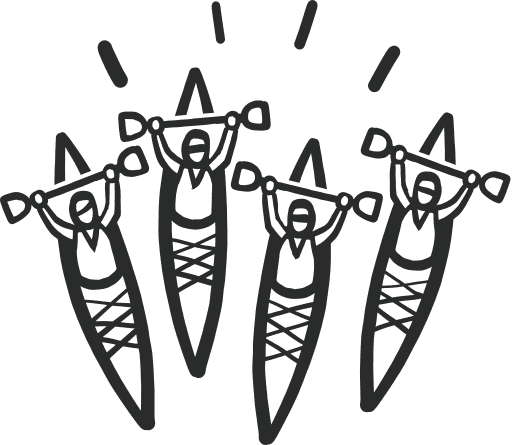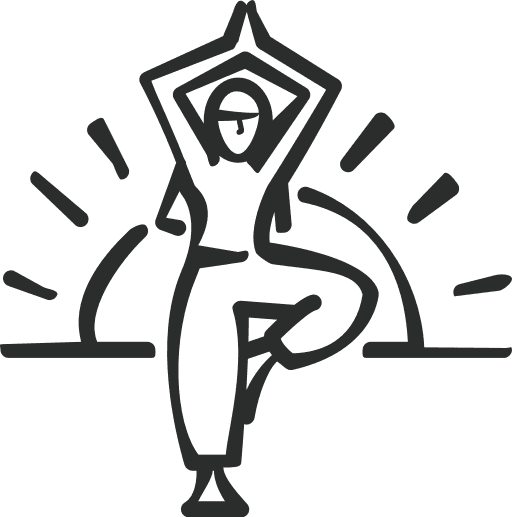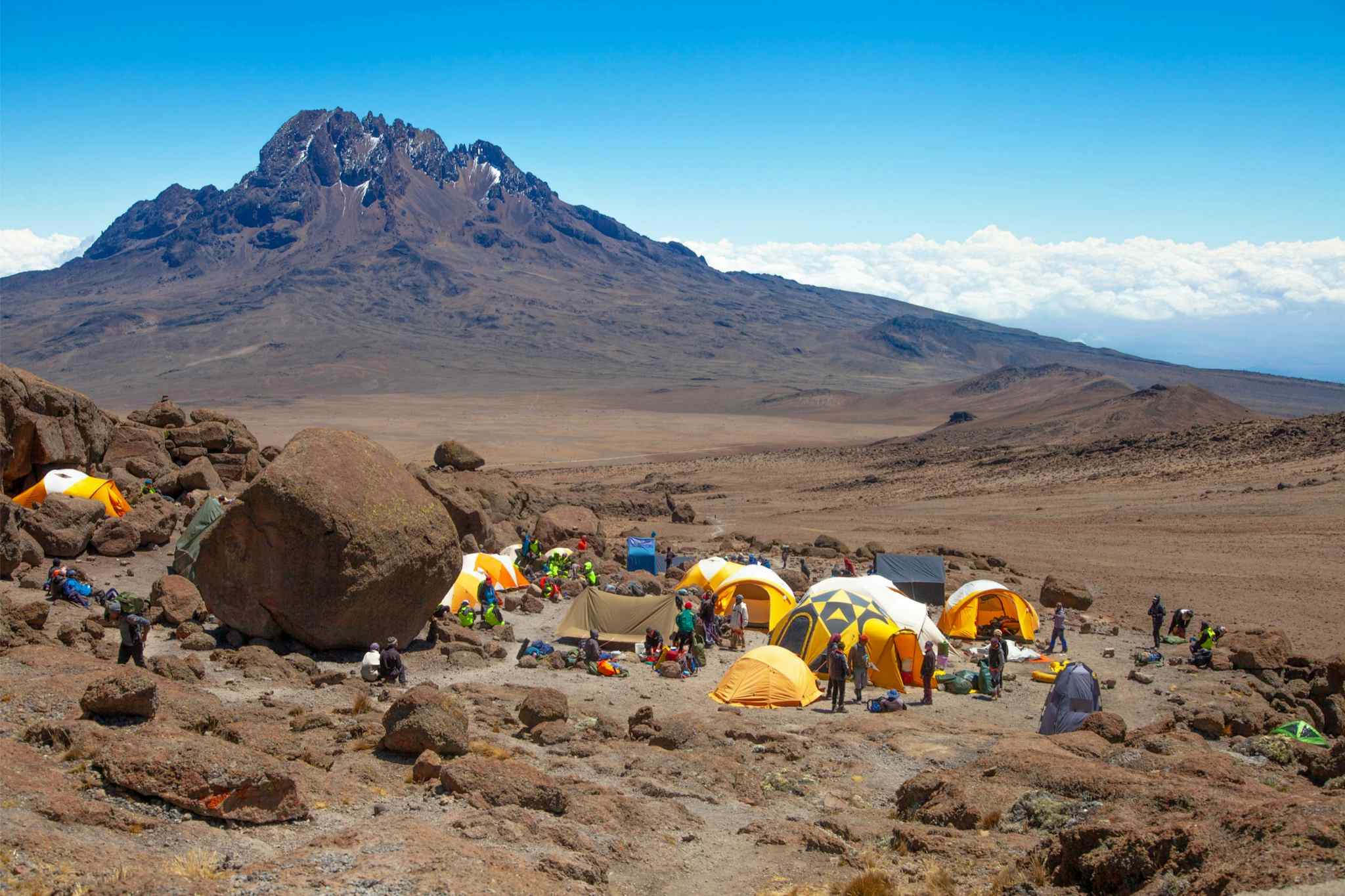
Climb Mount Kilimanjaro (5895m) via The Rongai Route
Hike one of the quietest and most remote routes to the summit of Kilimanjaro, Africa’s highest peak
What's Included?
Activities & Certified Guides
All itinerary activities with expert, local, English-speaking guides and support teamHotel & Camping
6 nights camping and 2 nights in a hotelMeals
All your breakfasts, lunches and dinners are includedTransfers & Porterage
Airport transfers and everything in between; porters will transport your overnight luggage and camping equipment for youPermits & fees
Your permits, taxes and licenses are all taken care ofSmall Like-minded Groups
Solo-friendly by design, join our small n’ sociable groups of up to 12 like-minded, active and outdoorsy people…
…
What's it like?






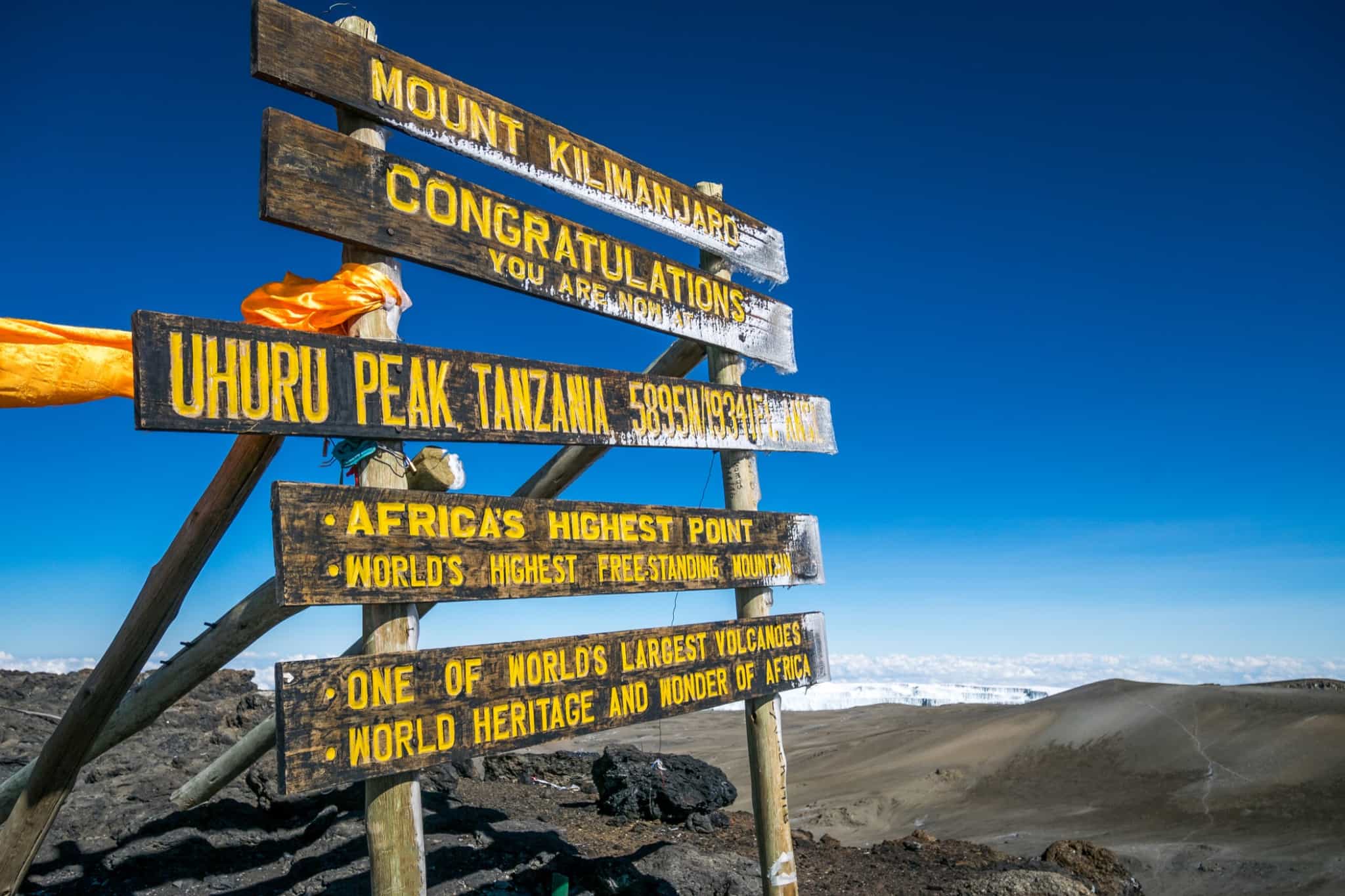
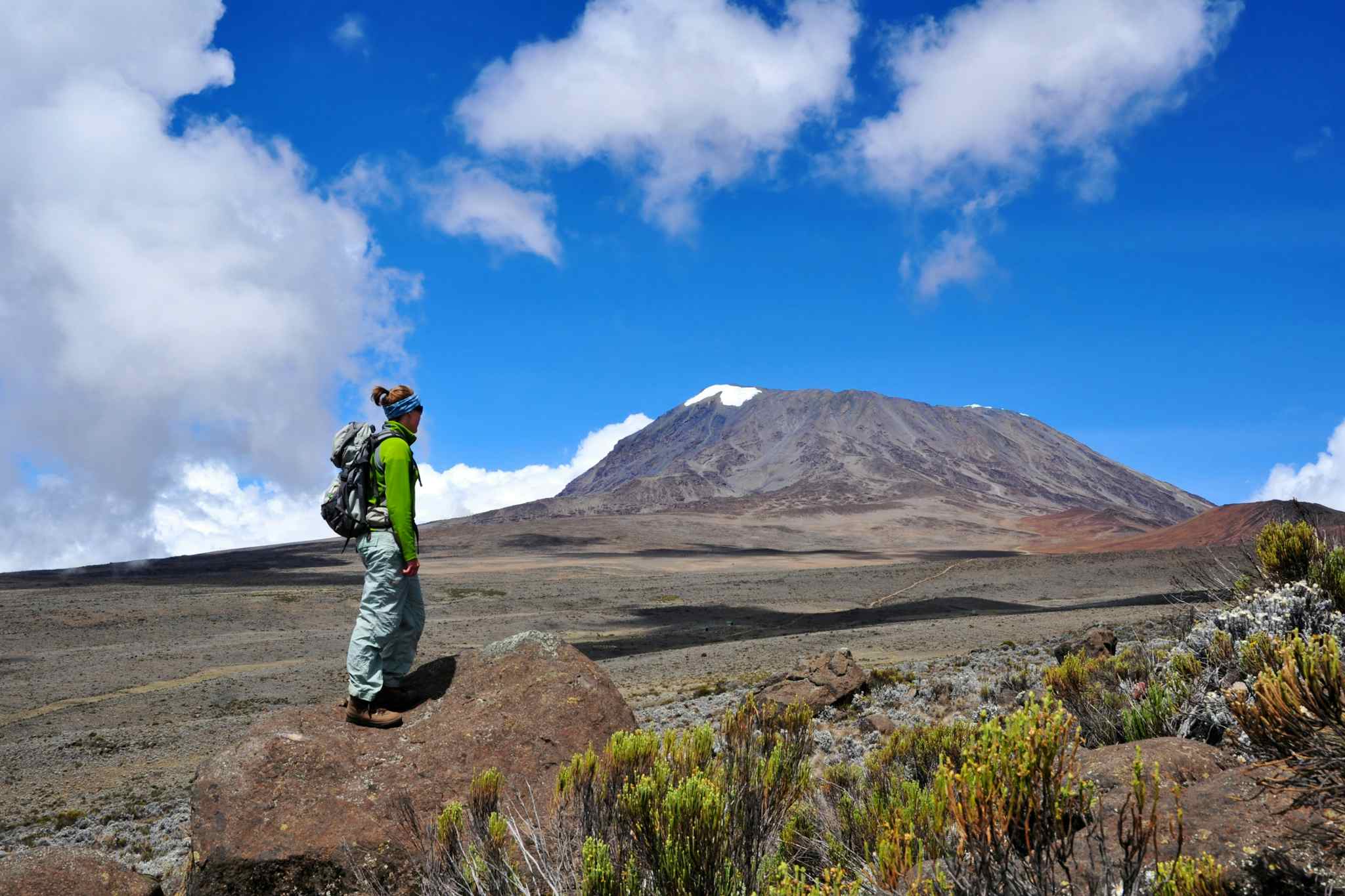
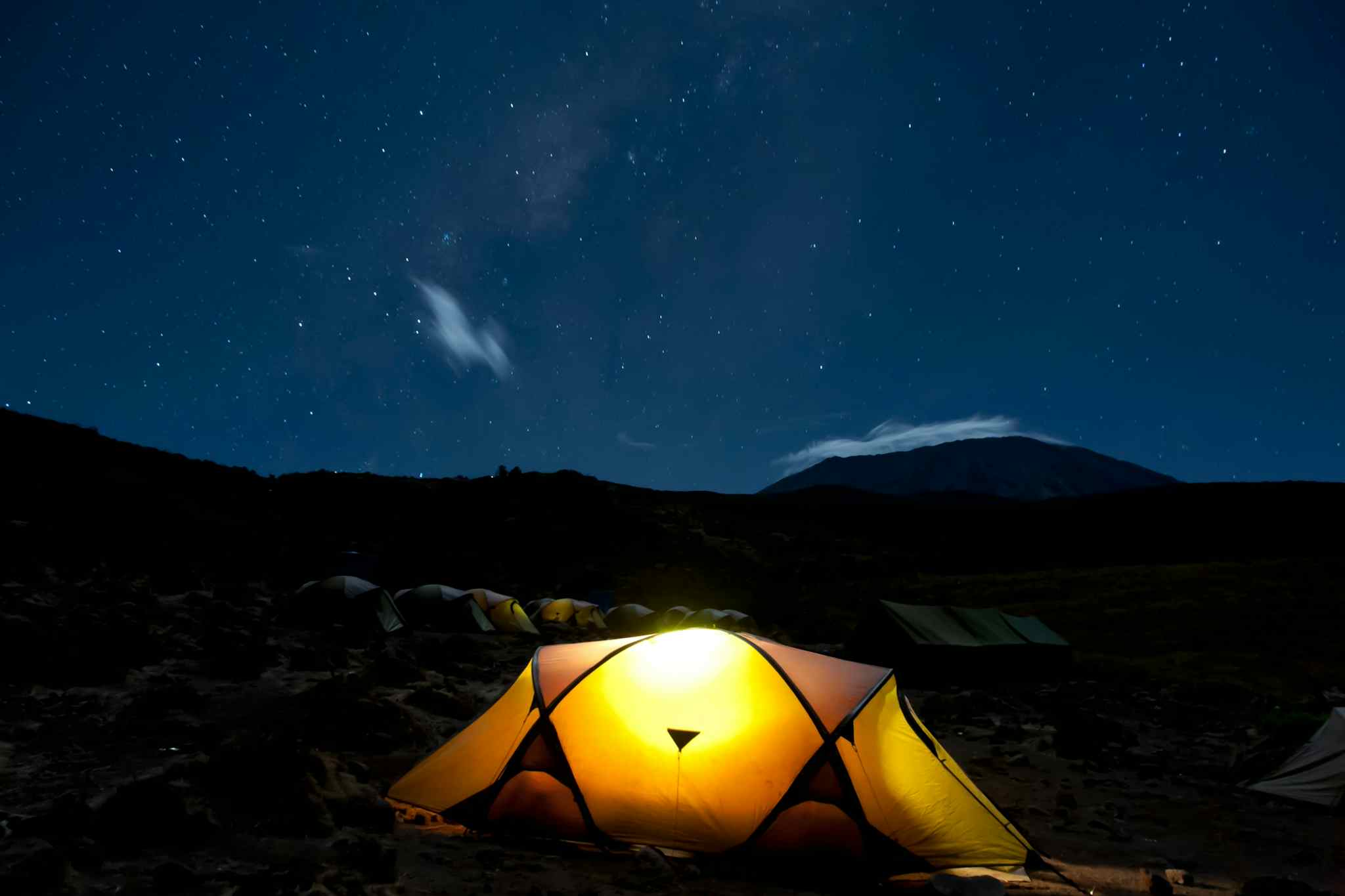
Summit the iconic 5895m high peak of Mount Kilimanjaro, the mountain that’s on many a trekker’s bucket list
Escape the crowds on one of the quietest routes to the ‘Roof of Africa’, ascending the little-visited northern side with epic views over the Kenyan plain
Enjoy an additional acclimatisation day at Mawenzi Tarn increasing your chance of summit success with seven full days on the mountain
Key Information
Day 1
Welcome to Tanzania!
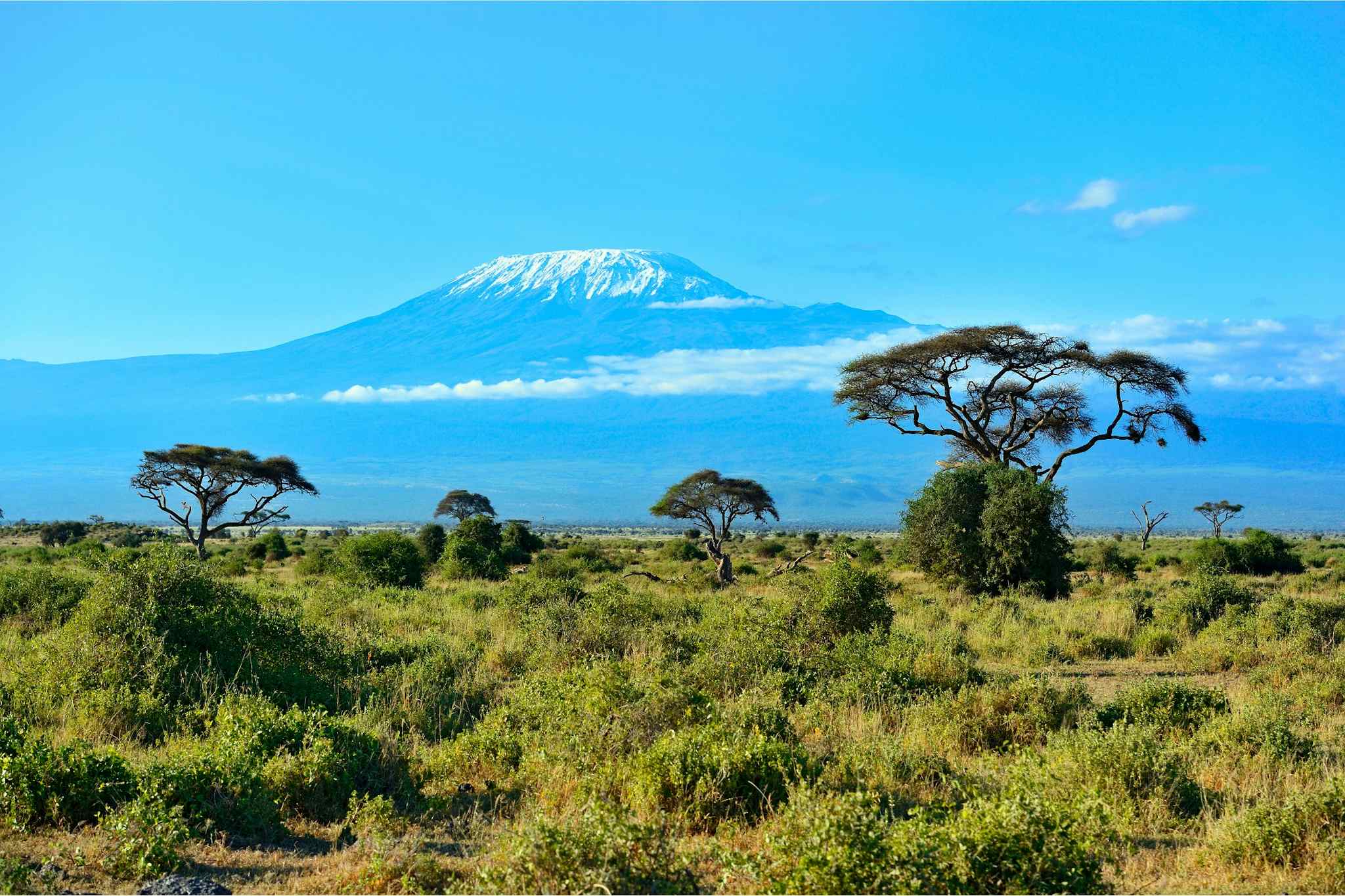
Fly into Kilimanjaro International Airport and transfer to your accommodation in Moshi, where your host will be waiting for you. You'll meet your guide for a detailed briefing and equipment check, then you can get to know your fellow travellers over dinner. Retire for an early night, ready for tomorrow’s adventure.
Day 2
Rongai Gate (1950m) to Simba Camp (2635m)
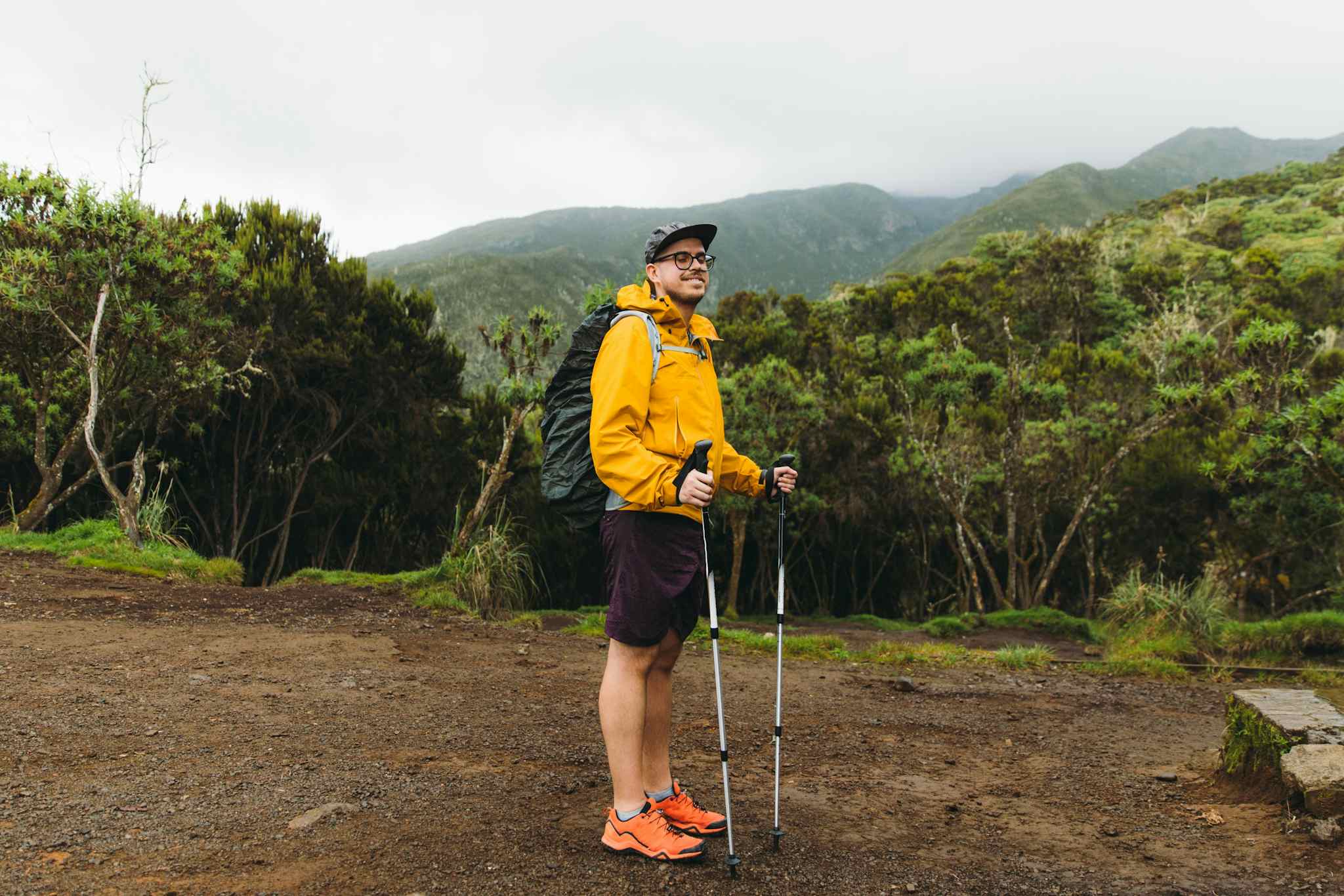
Driving
Hiking
A scenic drive takes you around to the village of Nale Muru, which is on the north of Kilimanjaro on the border with Kenya. Complete your Kilimanjaro National Park registration and meet your trek crew, before continuing to the Rongai Gate to start your trek. Enjoy beautiful wooded scenery and windy trails as your guide tells you about the local flora and fauna – eyes peeled for wildlife as you go. Simba Camp, your base for the night, sits near the first cave at the edge of the moorland zone with spectacular views of the plains of Kenya.
Day 3
Simba Camp (2635m) to Kikelewa Camp (3675m)
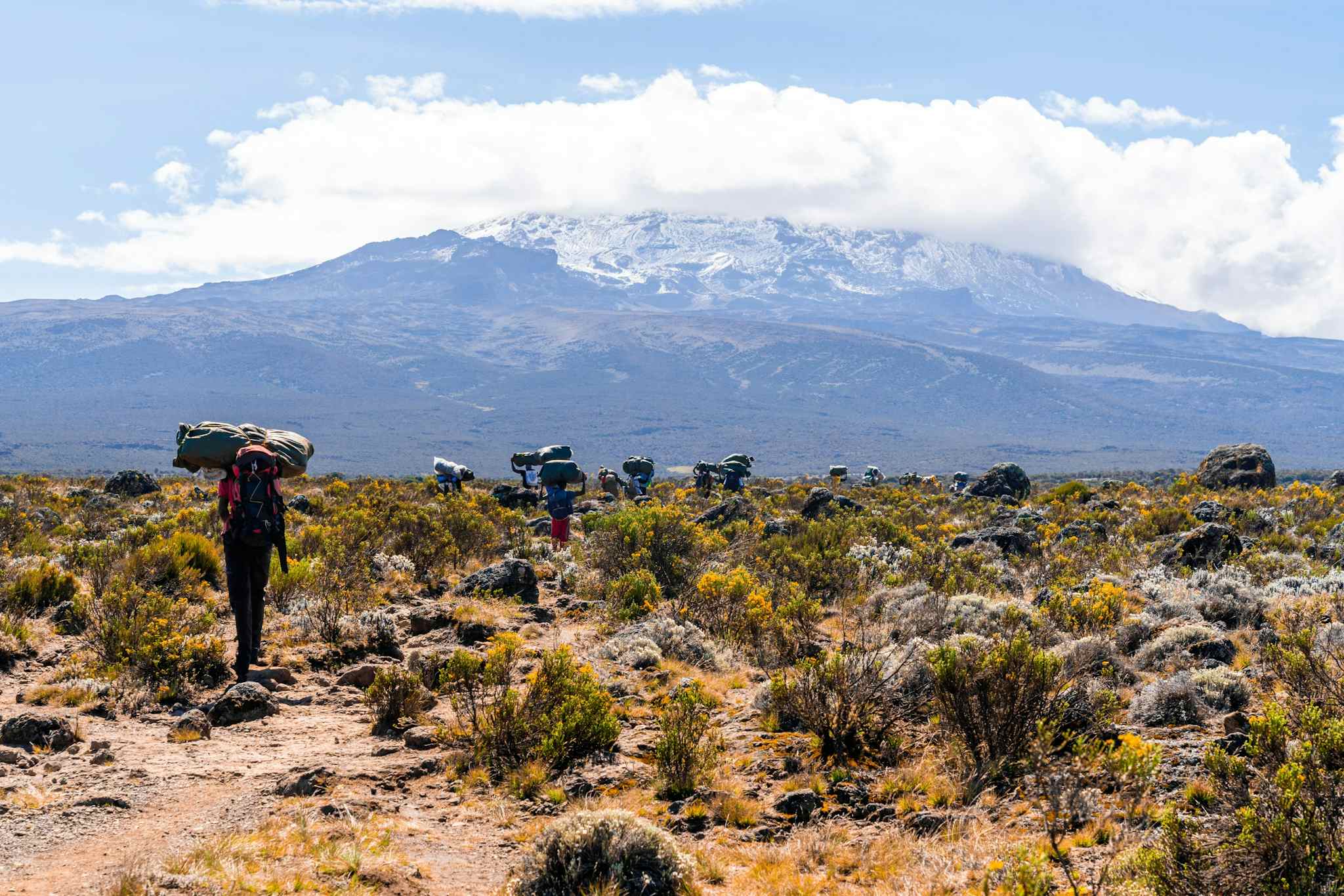
Hiking
Lace up your boots for a longer day's trekking, climbing nearly 1,000m to the next campsite. Walking this longer day early in the itinerary means extra time is gained for acclimatisation higher up the mountain. Today's trail climbs steadily across shrubby moorland towards Kibo Peak, passing the 'second cave' camp along the way where you will stop for lunch. You reach tonight's camp at Kikilewa Caves (3675m), where you have terrific views of Kibo and your first glimpse of the ice fields on the Eastern Crater Rim.
Day 4
Kikelewa Camp (3675m) to Mawenzi Tarn (4300m)
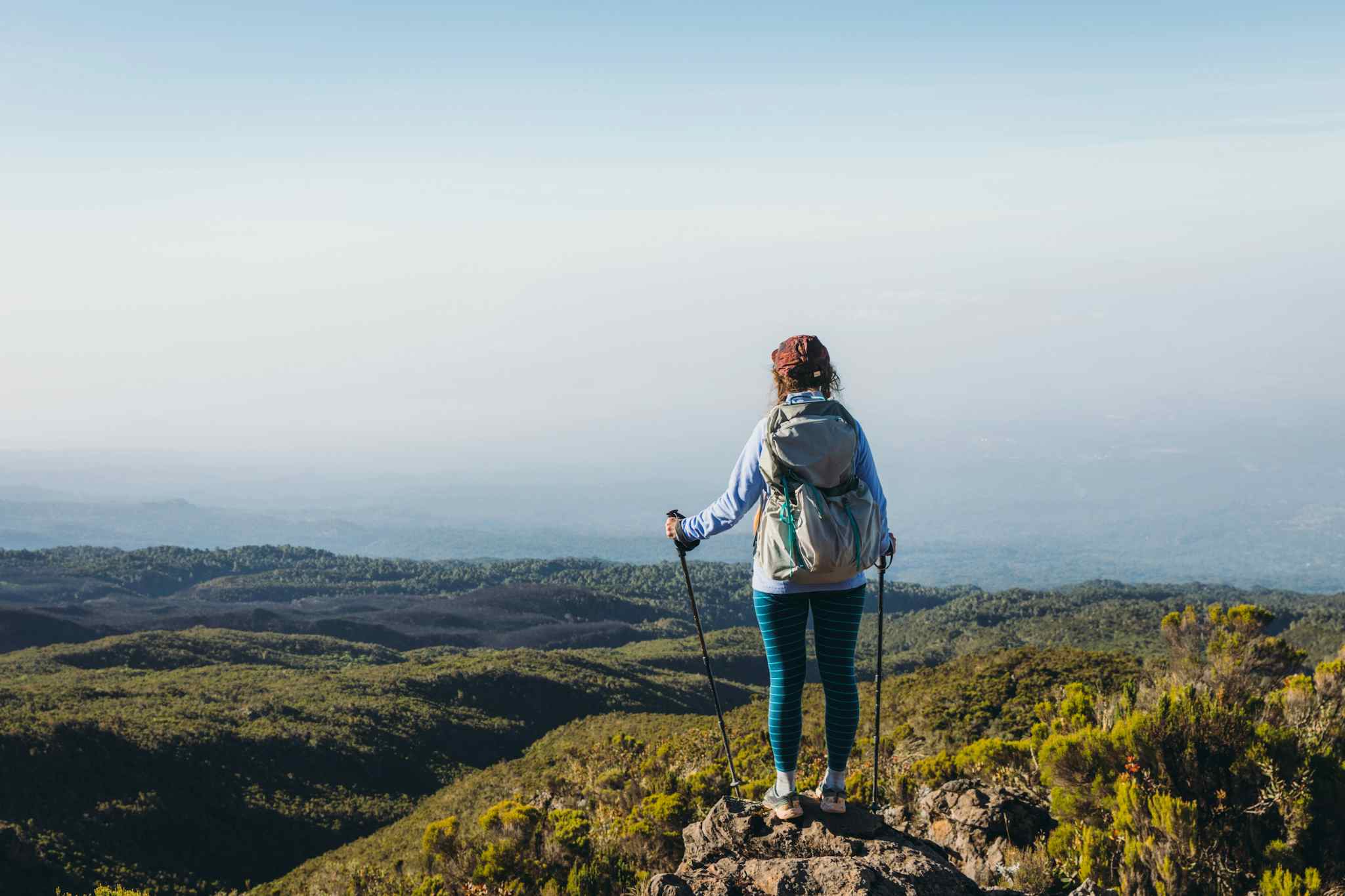
Hiking
A short but steep climb up grassy slopes is rewarded by superb all-round views and a tangible sense of wilderness. Leave the vegetation of the moorland behind as you climb into the arid semi-desert zone of the mountain. Your next camp is at Mawenzi Tarn (4300m), spectacularly situated in a cirque directly beneath the towering spires of Mawenzi. Reach the camp early afternoon, where you can get some rest or explore the surrounding area, all the while acclimatisating to the altitude.
Day 5
Acclimatisation day at Mawenzi Tarn
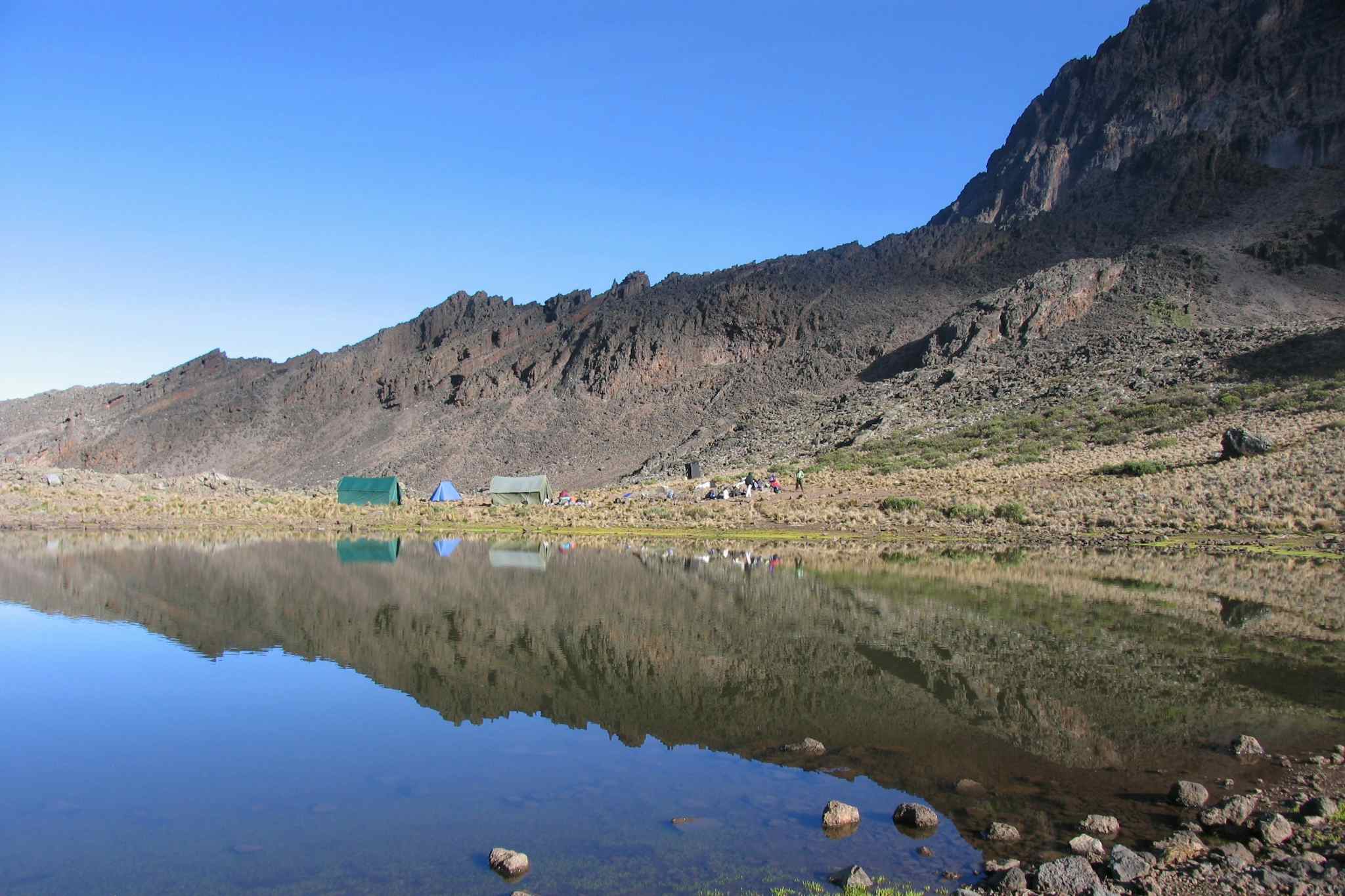
Hiking
Today is an important acclimatisation day to boost your chances of summit success, you'll spend the full day around Mawenzi Tarn. There is plenty to do, with several paths leading up the ridges and towers of Mawenzi (one of the three peaks of Kilimanjaro). Your guide will choose the best option for the group. Rested, fully fed and having had two nights sleeping above 4000m, you'll be best equipped for your summit push over the next two days.
Day 6
Mawenzi Tarn (4300m) to Kibo Camp (4714m)
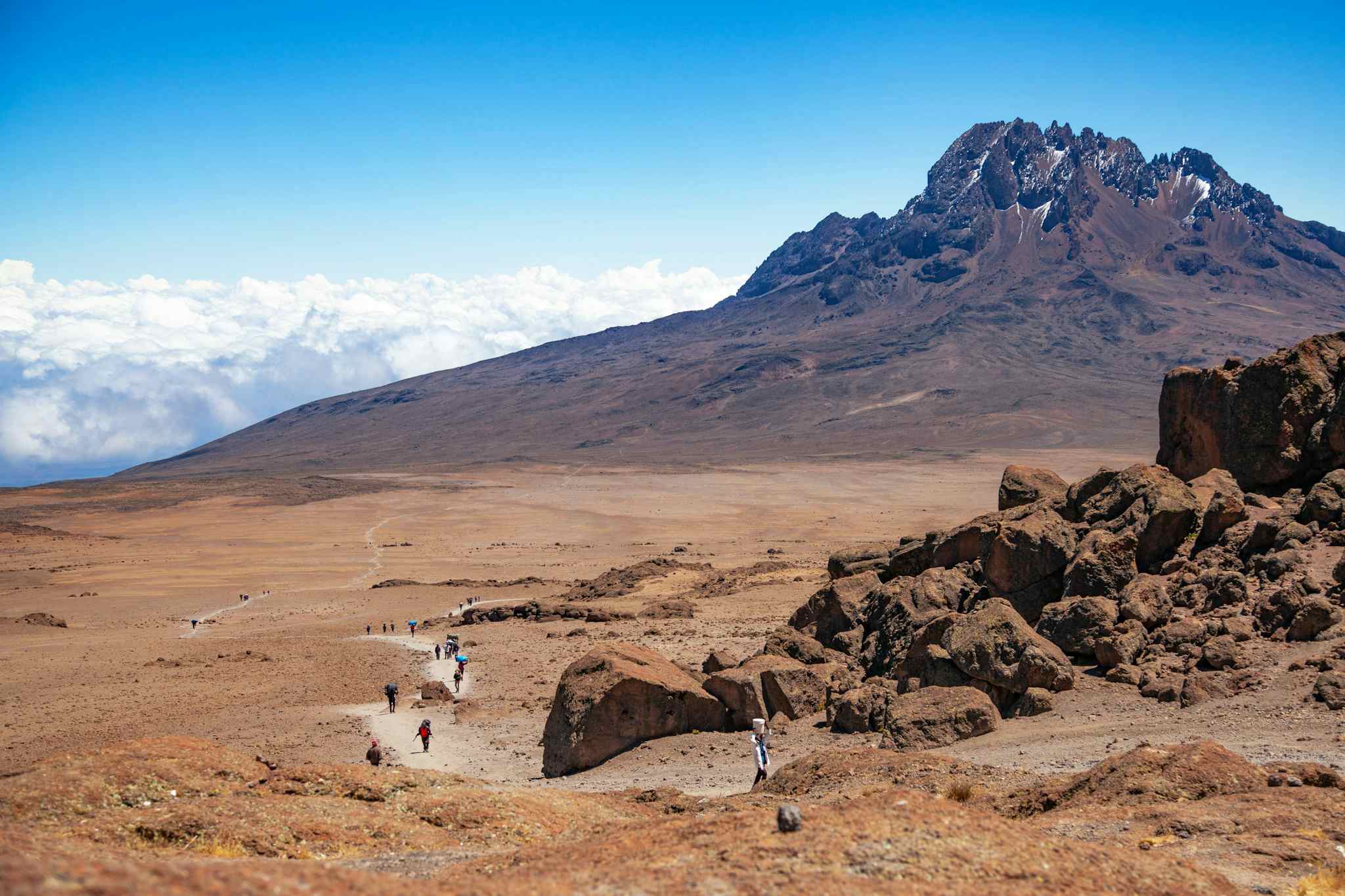
Hiking
Cross the lunar desert landscape that makes up the saddle between Mawenzi and Kibo, the highest of Kilimanjaro's volcanic cones and home to the summit of Uhuru Peak on its crater rim. After a moderate ascent, made more challenging by the thinning air at this altitude, you'll reach the Kibo campsite at the bottom of the Kibo crater wall. Have an early dinner, get yourself ready for the summit push in the morning and get some sleep. Nearly there!
Day 7
Summit day!
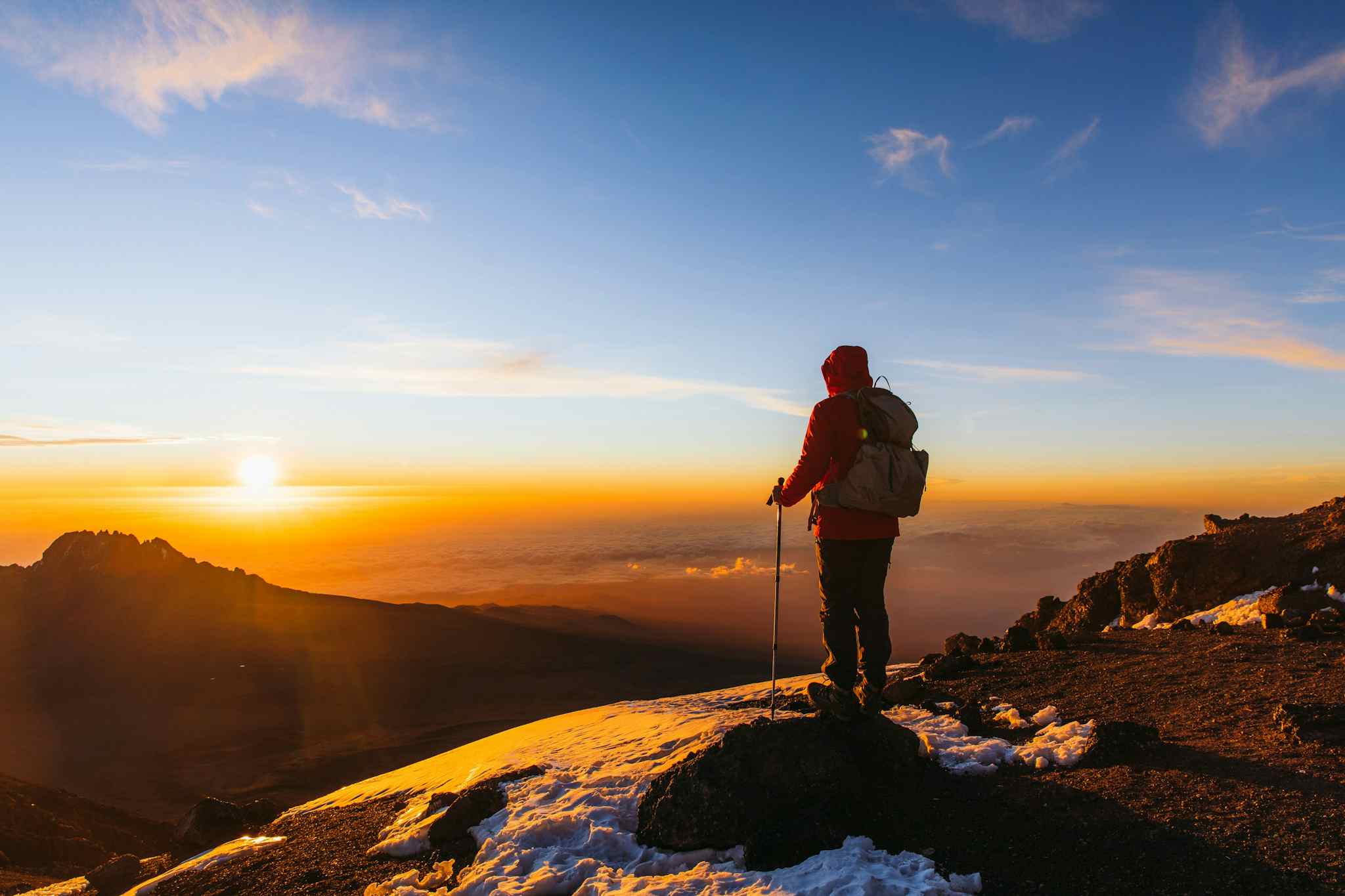
Hiking
Set off around midnight to begin the most challenging day, as you make your push for the summit. With your head torch on, ascend slowly on a zig-zagging path through heavy scree, passing the Hans Meyer Cave (5220m) before reaching Gillman's Point (5670m) on the crater rim. Take a short rest, as you watch the sunrise over Mawenzi Peak. With the sun slowly warming you up you'll soon have forgotten the cold of night as you continue your climb to Uhuru Peak (5895m) – the highest peak on Mount Kilimanjaro, the highest point in the whole of Africa and possibly your greatest trekking accomplishment. After a rest and some photographs, begin the long descent over dusty terrain forged by volcanic ash. Passing Kibo Hut, a warm meal awaits before continuing for another couple of hours to your camp outside the Horombo Huts (3721m) for a well-deserved rest.
Day 8
Descend through the forest on the Marangu Route
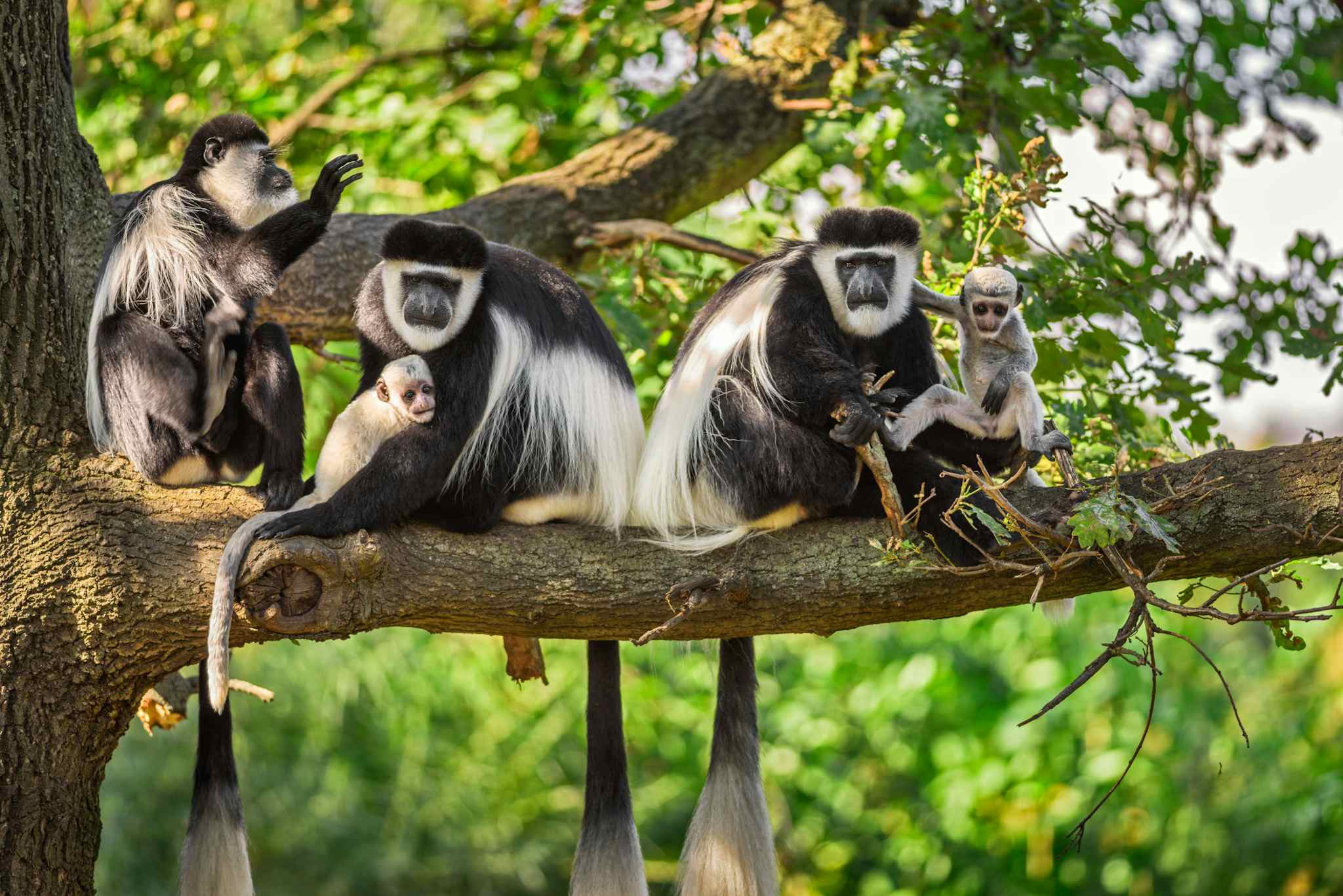
Hiking
Continue your descent to the Marangu Park Gate through lush forest – eyes peeled for fluffy black and white colobus monkeys as you reach the lower elevations. Keep your gaiters and trekking poles handy, as the weather here will be significantly warmer making the terrain wet and muddy. When you reach the park gate, you’ll collect your summit certificate before driving back to your hotel in Moshi where you can enjoy a hot shower and celebrate the end of your epic adventure. Following your trek, there will be a tipping ceremony for the crew who helped you scale the mountain – please see the FAQs below for more information on this important local custom.
Day 9
Asante Sana Tanzania!
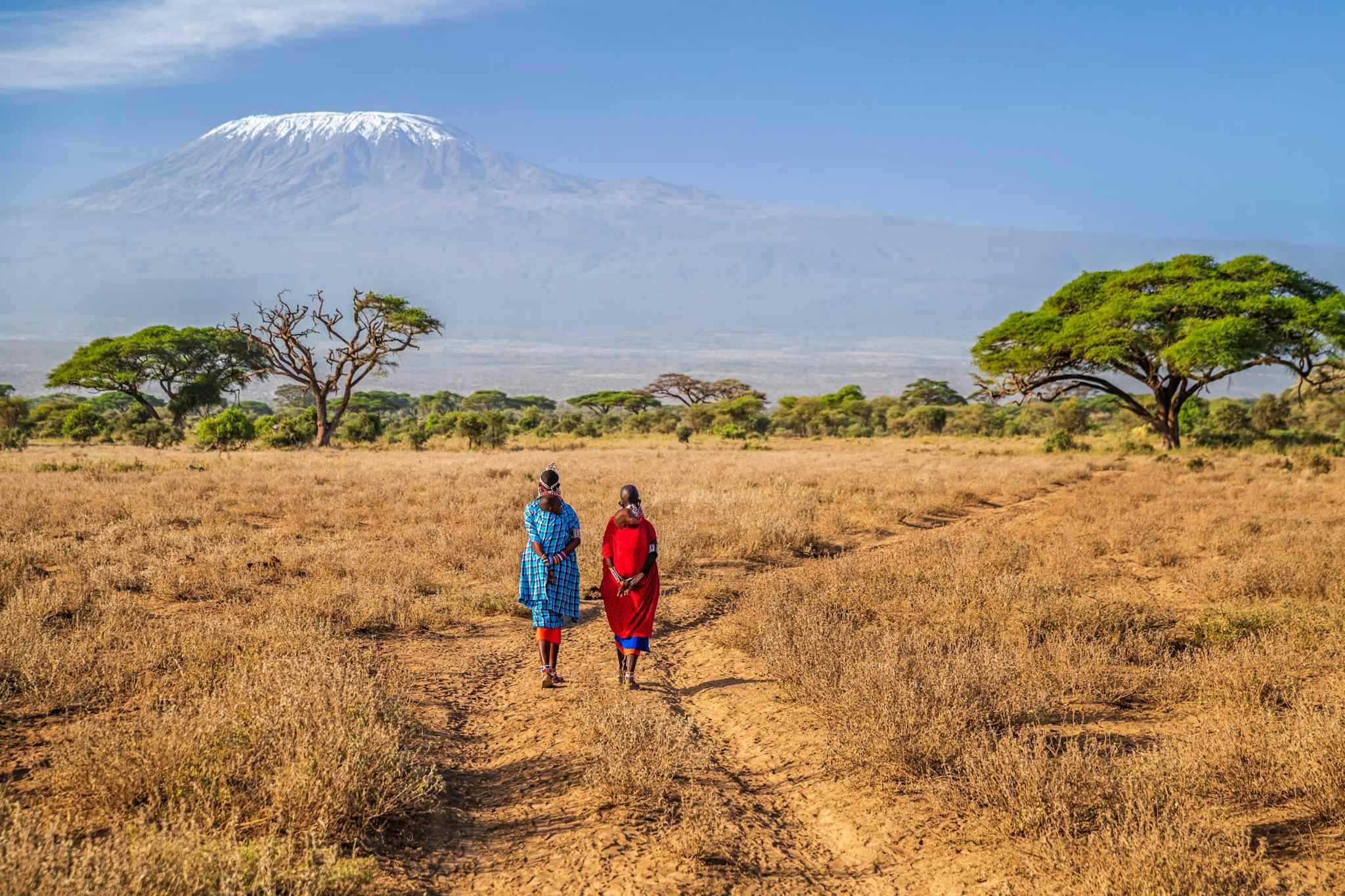
Enjoy a relaxed breakfast to mark the end of a remarkable trip and then head back to the airport, or continue your adventure in Tanzania.
The Area
Logistics
Starts
Kilimanjaro Airport
Any time on Day 1
Ends
Hotel in Moshi or Kilimanjaro Airport
Any time on Day 9
Transfers
Your adventure begins at Kilimanjaro Airport (JRO) where your driver will be waiting for you outside the Arrivals area. Your adventure ends with an overnight stay at the hotel in Moshi; from here you may decide to continue your adventure in Tanzania or ask your host to arrange an airport transfer for any flight departing that day. The airport transfer takes around an hour.
Airport transfers are included in the price if you arrive on Day 1 and depart on Day 9. For those arriving early or wanting to stay on longer, extra nights at the hotels and airport transfers can be arranged with your host at an additional cost. Please see Optional Extras for more information.
Travel options
There are frequent flights to Kilimanjaro (JRO) from major airports across the UK and Europe.
Day 1
Breakfast
Lunch
Dinner
Day 2 – Day 7
Breakfast
Lunch
Dinner
Day 8
Breakfast
Lunch
Dinner
Day 9
Breakfast
Lunch
Dinner
What is the food like?
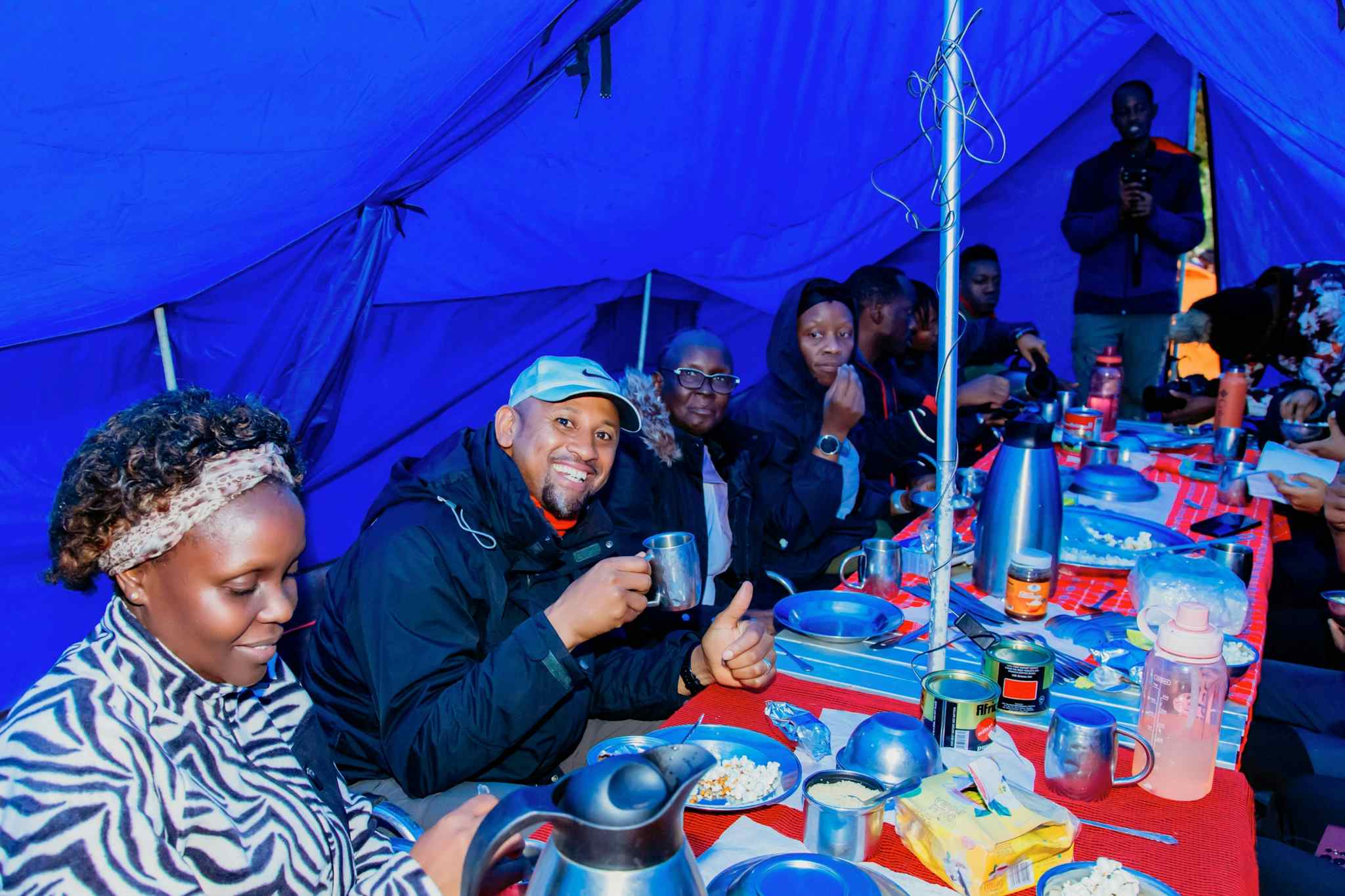
Throughout your trip, a team of experienced chefs will cook and serve you nutritious meals. Breakfast will usually be some combination of fruit, cereal, porridge, eggs, bread, French toast, pancakes, sausage, bacon, tea, coffee and hot chocolate. Lunch will be a mix of vegetables, fruit, boiled egg, meat cutlets, various sandwich options (egg/cheese/tomato/tuna/meat/peanut butter), macaroni and meat sauce and bread. Dinner, meanwhile, will usually consist of soup, bread, salads, rice, pasta, potatoes, roast or fried chicken, beef or fish, curry, mixed vegetables, lentils, fruit salad and fruit with custard. On summit night, you’ll enjoy a midnight snack with juice, soup, hot chocolate, tea or coffee and biscuits. On your way down from the summit you will stop for a hot meal at the Kibo hut around lunchtime before continuing your descent. If you have any special dietary requests, let your host know in advance and they will do their best to accommodate them. Vegan and vegetarian diets can be fully catered for.
What is the accommodation like?
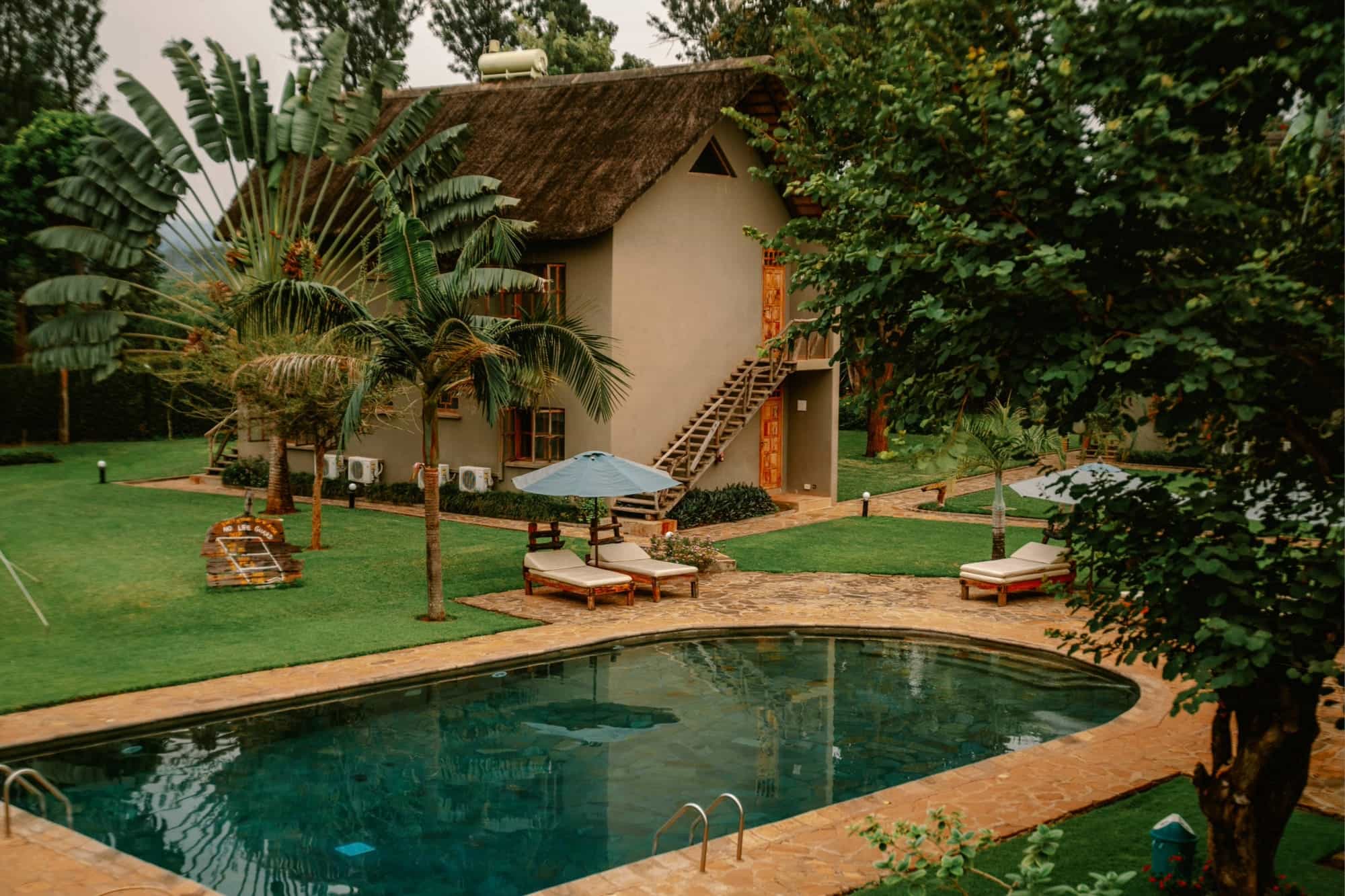
Moshi
You'll spend your first and last nights of the trip in a twin-share room at Weru Weru River lodge, located on the quiet outskirts of Moshi Town and 30km from the airport. Rooms are modern and comfortable with ensuite bathrooms and free WiFi. Some departures also use the Panama Garden Resort or Kilimanjaro Wonders Hotel which are located more centrally in Moshi.
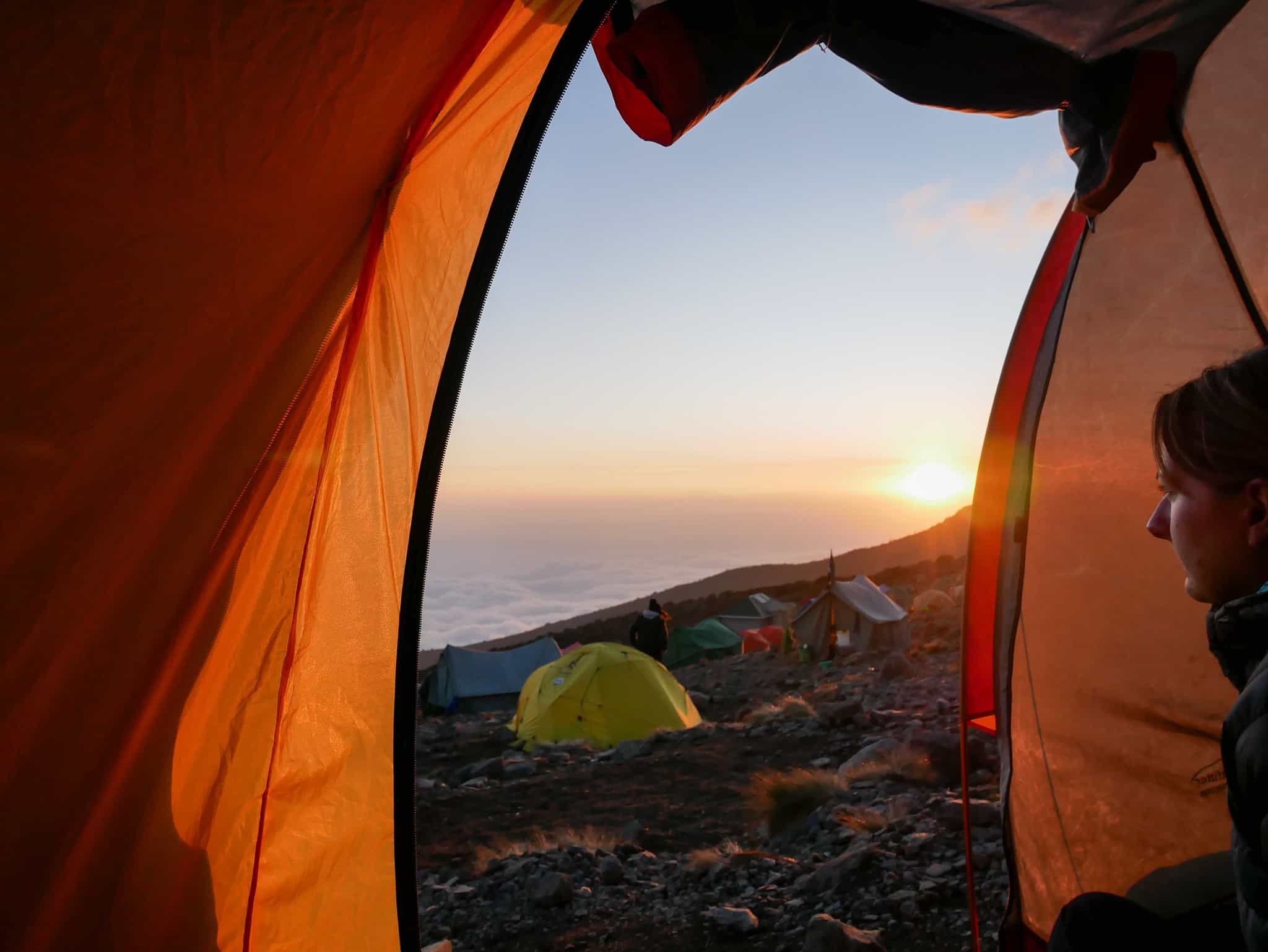
Camping on Kilimanjaro
During the trek, you will camp at a number of sites along the Rongai Route in twin-share tents, with camping and cooking equipment provided (you'll need to bring your own sleeping bag, or hire one, though). You'll also have a mess tent where you'll be served all your meals. Your team of porters will set up and break down camp for you each day, so you can save your energy for the trek.
There are now several permanent public ‘long-drop’ toilets in most of the camps along the Kilimanjaro routes. In addition to this, when at camp, your porters will set up a private portable and flushable toilet especially for your group complete with washing station and bin. In between camps, you will need generally to find a convenient boulder or shrub. Whilst this is all part of a wilderness adventure, it can have a negative impact on the surrounding environment, if not practiced carefully.
Upgrades
For solo travellers wanting their own space, there is the option to upgrade to a private room or tent if you would like to do so, subject to availability. See Optional Extras for prices.
This trip has been rated as Challenging
An epic challenge! This trip has been rated as challenging due to consecutive days of around 6 or 7 hours trekking with plenty of elevation gain at high altitudes. Mount Kilimanjaro (5895m) isn’t a technical climb, but the route can be steep and rough underfoot. It is also important to note that trekking at altitudes above 3000m is more demanding on the body than walking at low elevations, and this will be the main challenge. Your guide will set the pace and as with all altitude treks, the theme is ‘pole pole’ (slowly, slowly in Swahili) to help you adjust to the high altitude.
Given the nature of the trip it is necessary to have some previous hiking experience under your belt. We would recommend working on your hill fitness over several weeks or months before attempting this climb. This would involve developing a reasonable base of cardio and strength fitness combined with some specific hiking preparation in the hills. Think of a few weekends of back-to-back walking days with as much up and down as you can fit in, if you want to make it harder carry a heavy backpack! This preparation will set you up to get the most out of your trek and enjoy yourself on your adventure!
This trip follows the Rongai Route over 7 days on the mountain, however Much Better Adventures also offers you the chance to climb Kilimanjaro via the Lemosho Route which spends 8 days on the mountain or the Machame Route which spends 7 days. See the FAQs below for more details on the individual routes.
What will I need to carry?
Your porters will carry your main kitbag allowing you to only have to carry a day pack with your basic kit for each day of walking. There is a limit to the weight that the porters can carry and therefore your main kitbag must be no heavier than 20kg. If you wish to bring more than 20kg it is best to arrange another bag and an extra porter charge will apply.
It's possible to climb Mount Kilimanjaro all year round, however, the months outside of the rainy seasons are more desirable. The best climbing months are from December to March and July to October. The best weather is usually at the beginning of the year from January to March, which are also typically the warmest and driest months. Thanks to Tanzania’s proximity to the equator, the region doesn’t typically experience the extremes of winter and summer weather you might expect and instead has dry and wet seasons. The local weather conditions on Kilimanjaro can be somewhat unpredictable (to say the least) and rainfall varies from 2100mm per year in the rainforest belt to less than 120mm per year in the summit zone. Daily temperature changes are also unpredictable when compared to normal weather cycles, and are largely dependent on the altitude.



Breathtaking Experience
What an experience and adventure.
Our group of 4 all made it to Uhuru peak via the Rongai route, an experience I will never forget.
Much better adventures were great to book via with clear communication throughout.
Ahsante tours crew looked after us incredibly throughout, William (Guide) and the support crew were absolutely flawless in ensuring we were looked after and had the most enjoyable experience whilst trekking and submitting.
An amazing experience all round and would highly recommend.


Most incredible experience!!!
I don't have words to describe this week! Everything was perfect: the food, accommodation, service and team ! Couldn't have wished for a better experience
positive inaugural trip
Good first crack at rongai from mba
Itinerary Activities
- 7 days of guided hiking on the Rongai Route to summit Kilimanjaro
Guides
- Expert, local, English-speaking guides and assistant guides
Accommodation
- 6 nights camping along the route
- 2 nights in a hotel in Moshi
Meals
All your meals are provided for the duration of the trip. This includes:
- 8 nutritious breakfasts
- 7 picnic lunches
- 8 homemade dinners
Transfers
- Arrival transfers from Kilimanjaro Airport at any time on Day 1
- Departure transfers to Kilimanjaro Airport at any time on Day 9
- All transfers during the trip
Porterage
- A full support team of porters to transfer your luggage, set up camp each day, and cook your meals
Permits
- All permits, taxes and licenses
Our trips are hassle-free by design. We include all the activities and equipment, as well as many of the meals, so you can simply rock up with your rucksack and share the adventure with your new pals.
Travel to and from the trip
Our trips do not include flights, trains or other travel to the start point and back from the end point.
Tips
Tips are not included in the trip cost. These are, of course, entirely at your discretion but the norm in Tanzanian culture means there is an expectation to tip for good service. This particularly applies to climbing Kilimanjaro, where tipping culture is deeply ingrained and an important custom. Even if it may not be customary to you, it is of considerable significance to the people who will take care of you during your travels. After your climb, there will be a ‘tipping ceremony’ in which you’ll have the opportunity to show your gratitude to the team who have supported you along the way.
- We would suggest a minimum tip of $400 per guest.
Your host will provide guidance on the appropriate split of the money between the team members. Each individual will be presented with their portion of the tip in a sealed envelope, and in turn you’ll be presented with your Kilimanjaro summit certificate.
In Tanzania, many banks and businesses refuse notes that are old or damaged in any way, so tips with bills that are no more than 15 years old and in good condition are gratefully received.
Personal Expenses
You know your own spending habits best, so please budget an appropriate amount for things like optional meals and drinks, shopping, optional activities, and laundry.
Travel insurance
Travel insurance is compulsory for all of our adventures and you are required to provide your policy information before departing. Your insurance should include adequate protection for overseas medical treatment, evacuation/repatriation, your baggage and equipment and the specific activities involved on your adventure. We also strongly recommend it includes cancellation and curtailment insurance, should you be unable to join your trip for specific reasons such as illness. Our recommended travel insurance provider is Campbell Irvine, as their insurance offers all of the above.
Visas
You are responsible for obtaining any required visas for this trip. Please check with your nearest embassy or consulate for up-to-date advice. Information about visas can also be found on the Tanzanian Immigration website.
Mountain environments can be unpredictable. A layering system works best so that you can put on and remove items to adjust your temperature.
What's included?
- Tent
- Foam Mattress
What can I hire?
- Walking poles
- Headtorch (you will need to bring your own AAA batteries)
- Sleeping bag
- Day pack (with or without waterproof covers)
- Duffel bag
- Nalgene water bottle/water bladder
- A range of clothing (fleece pants, waterproof pants, walking trousers, windbreaker/ski trousers, waterproof jacket, light fleece jacket, heavy fleece jacket, down/ski jacket, hat, thermal top & bottoms, scarf, sunglasses, thin glove liners, thick ski gloves, hiking boots, gaiters, poncho, socks). Pricing ranges from $5-$50 per item for the whole trip. Please request any items you would like to hire with your host via your booking prior to departure for confirmation of pricing and availability.
What do I need to bring?
CLOTHING
- Waterproof jacket (good quality, breathable with hood)
- Weather rated insulated jacket (synthetic or down, with hood)
- Waterproof trousers (breathable)
- Hiking boots (warm, waterproof, broken-in with spare laces)
- Fleece or soft-shell jacket
- Long sleeved tops (lightweight, moisture-wicking fabric)
- Short sleeved t-shirts (lightweight, moisture-wicking fabric)
- Hiking trousers
- Fleece/Thermal trousers
- Shorts
- Knitted beanie hat
- Buff/Balaclava/Bandana (for face/neck coverage)
- Warm gloves (waterproof recommended)
- Something to sleep in (warm layers for camping at altitude)
- Underwear (moisture-wicking fabric recommended)
- Sports bra
- Socks (thick - wool or synthetic)
- Sock liners (tight and thin - worn under socks to prevent blisters - synthetic)
OTHER
- Duffel bag (for porters to carry your clothes and equipment-see related FAQ for guidance on weight)
- Backpack to carry your personal gear during the day (25-35 litres)
- Backpack cover (waterproof)
- Sleeping bag (warm, four season rated)
- Trekking poles (highly recommended)
- Waterproof gaiters / trail gaiters (highly recommended to prevent loose gravel and sand)
- Water bottle (Nalgene recommended) AND a water bladder (CamelBak type) - must have 2-3 litres combined; please note that disposable plastic bottles are not allowed on the mountain due to National Park regulations
- Headtorch with extra batteries
- Sun Protection (Sunglasses, Sun hat/cap, Sunscreen - SPF 35+ recommended))
- Lip balm
- Hand Gel
- Mosquito repellent (for Moshi - not usually needed on the mountain)
- Trip receipt
- Mobile charger
- Universal plug adaptor
- Personal medication and first aid kit
- Earplugs
- Power bank
- Book/Kindle/playing cards, for downtime
- Passports (and visas)
- Travel insurance documents
OPTIONAL
- Lightweight trainers/sneakers (to wear at camp - optional)
- Sleeping bag liner (for added warmth - optional)
- Liner gloves (thin, synthetic - worn under gloves for added warmth - optional)
- Poncho (during rainy season - optional)
- Towel (lightweight, quick-dry - optional)
- Pee bottle (to avoid leaving tent at night - highly recommended)
- Stuff sacks or lightweight dry bags (various sizes, to keep gear dry and separate - highly recommended)
- Hot water bottle for the night (optional)
- Swimwear (there is a pool at the accommodation in Moshi - optional)
- Extra water purification tablets (water will be purified by your trek team so this is optional)
- Extra Energy bars and snacks - read our article on Best Hiking Snacks
Extra night in Moshi (twin / double)
Payable Before Departure
Extra night in Moshi (twin / double)
… Per night
Extra night in Moshi (single)
Payable Before Departure
Extra night in Moshi (single)
… Per night
Optional Private Room & Tent Upgrade
Payable Before Departure
Optional Private Room & Tent Upgrade
… Per person
Private airport transfer - Kilimanjaro to Moshi - each way
Payable Before Departure
Private airport transfer - Kilimanjaro to Moshi - each way
…
We partner with the World Land Trust to ensure this trip achieves Net-Zero emissions. We also support their Buy an Acre programme, helping local communities to buy and protect natural habitats in perpetuity.
What's the number?
It works out on average at 119.5kg of CO2 emissions per person, including all local transport, accommodation, food, activities, guides, staff and office operations.
The only thing it doesn’t include right now is flights and travel to the destination. We do make an overall estimate across all our customers separately, but as we don’t book flights, have customers from all corners of the world, and no way of reliably knowing their travel plans, we simply can’t include an individual number in the figure on display here. We’ve got a goal to fix that, so that when you book, there is a way to measure and mitigate the carbon emitted by your flight too.
But what does the number mean?
Yep, hard to picture eh? To give you an idea:
- Driving 1000 miles/1609km would be approximately 281kg of CO2 in an average car (or 140.5kg per person, if there were two of you in it).
- A return economy class flight between London and New York would be approximately 1619kg (1.66 tonnes) per person.
- 10 trees in a temperate forest are estimated to remove approximately 250kg of CO2 from the air in a period of 5-10 years.
What are we doing about it?
Our trips are relatively low-carbon by design, and we're working with all our hosts to develop long term carbon reduction plans. We partner with the World Land Trust to ensure this trip achieves Net-Zero emissions. We also support their Buy an Acre programme, helping local communities to buy and protect natural habitats in perpetuity, ensuring the protection of the reserve and its wildlife.
Want to know more?
Amazingly, no international travel company has ever publicly published their carbon measurements before, as far as we know. We believe that must change, quickly. So we’re openly sharing the method we used in the hope that other companies will be able to more easily follow suit and build on what we've done so far. You'll find it all here.
Much Better Adventures offers three routes on Kilimanjaro. Depending on your preferences you can choose a route that is best suited to you; whether that's escaping the crowds on the quieter sides of the mountain, spending more time in Kilimanjaro's forest and moorland environments for best wildlife spotting, and of course finding a trip that suits the time and budget you have available.
Rongai Route (7 days on the mountain): A much quieter and more remote trek away from the crowds. Approaching from the north, your climb starts on Kilimanjaro's second peak, Mawenzi, before crossing a high saddle onto the main peak, Kibo, where you reach the same high point of the other routes, Uhuru Peak. The days are generally considered more moderate, with gradual climbs and avoiding the Baranco Wall scramble. However, the challenges of altitude and a long summit day remain. To reach the start of the Rongai Route involves a 3-4 hour drive.
Lemosho Route (8 days on the mountain): Our longest route with the highest success rate, if you have the extra day available this is probably the best all-round route for most. The Lemosho Route starts to the west of Kilimanjaro and enjoys three days of relatively quiet trails before joining the Machame Route at Lava Tower. These first days are through temperate forest, with good potential for wildlife spotting, before climbing up and across the Shira Plateau. With the extra day on the mountain, it is a more complete experience, seeing all sides and zones of the mountain, as well as allowing more time to adjust to the altitude – it is the route with the highest success rate and growing in popularity because of this.
Machame Route (7 days on the mountain): Considered to be very scenic, the Machame Route strikes a good balance between a safe acclimatisation profile and an efficient itinerary – the Machame Park Gate is only a 45-minute drive from Moshi, so it's the quickest to get to. As with Rongai and Lemosho, you have a different descent route for your way down the mountain.
See our guide to the Best Routes on Kilimanjaro for the full lowdown.
We do everything we can to give you the best chance of summiting Kilimanjaro successfully and safely. From the routes we choose, to the care and food provided on the mountain, our local host is very well placed to get you to the top! We have an average summit success rate of around 95% for all routes!
The guides have been extensively trained at the Mweka Wildlife Centre and are familiar with the routes, terrain and conditions. With over 10 years' experience, they have also been to the summit more than 100 times. Additionally, all of the guides are certified First Aid Responders and CPR trained.
For every customer, you'll be accompanied by approximately 3-4 supporting crew members. For example, a group of 8 is likely to be accompanied by 25 support crew. This is broken down as one lead guide, three assistant guides, one cook/chef, one waiter, one pilot (toilet porter), three tent crew, and 16 porters who carry any additional equipment.
Your host prides themselves on treating their porters and mountain crew as part of their extended family, and advocate for fair pay and treatment of porters through membership of key local associations, Kilimanjaro Porter's Association (KPA) and the Tanzania Tour Guide Association (TTGA). These associations work with the Kilimanjaro National Park Authority (KINAPA) to set minimum pay rates and regulations that all operators must abide by within the national park. Your host is committed to meeting or exceeding these expectations, as well as providing further benefits such as training opportunities so porters can progress on to roles of cooks or guides as they gain experience on the mountain. As a baseline MBA commit to ensuring:
· Porters are paid a minimum of 25,000Tsh per day (US $1 = approx 2,000 Tsh)
· Salaries must be paid within two days of the descent of ALL climbs
· A transparent tipping procedure, so porters receive the full tip amount intended for them
· Loads carried by the porter should not exceed 20kg for the company (excluding porter's personal kit)
· Porters are provided with three meals per day
· Porters have proper shelter conditions and sleeping equipment
· Porters are outfitted with proper gear
· Sick or injured porters are properly cared for
Tips are not included in the trip cost. These are, of course, entirely at your discretion but the norm in Tanzanian culture means there is an expectation to tip for good service. This particularly applies to climbing Kilimanjaro, where tipping culture is deeply ingrained and an important custom. Even if it may not be customary to you, it is of considerable significance to the people who will take care of you during your travels. After your climb, there will be a ‘tipping ceremony’ in which you’ll have the opportunity to show your gratitude to the team who have supported you along the way.
We would suggest a minimum tip of $400 per guest.
Your host will provide guidance on the appropriate split of the money between the team members. Each individual will be presented with their portion of the tip in a sealed envelope, and in turn you’ll be presented with your Kilimanjaro summit certificate.
In Tanzania, many banks and businesses refuse notes that are old or damaged in any way, so tips with bills that are no more than 15 years old and in good condition are gratefully received.
There is a limit to the weight that the porters can carry and your main kitbag must be no heavier than 15kg. Your sleeping bag can be packed separately, so this doesn’t need to be included in this weight limit. We would ask that you only bring essential items on the mountain to minimise the loads that the porters carry.
You will also need to have a daypack to hold your basic kit for each day of walking. We recommend that this is not over 6kg, and the lighter the better. Please bear in mind that you will need to carry a significant amount of water, so this will add to the weight of your daypack.
Extra items not required on the mountain can be left in Moshi.
You can securely leave any excess luggage at your host's base before setting off on the trek.
If you have any hiking gear that’s in good condition but you don’t need after your trek, donations to your team of porters will be gratefully received. Talk to your host if you’d like donate any of your gear.
Your team of porters will provide you with boiled and filtered water throughout the trek.
If you need to be taken down to a lower altitude as a matter of urgency, there are two options in place. In most instances, steel-framed, mobile stretchers can be pushed by porters to descend quickly. Most people feel immediate relief at lower altitudes where you will be evaluated and if the guides determine you are well enough, you will wait for your group at a lower camp or be taken to the gate for transfer to Moshi for medical treatment (if necessary). For more serious concerns, through a partnership with Kilimanjaro SAR, emergency helicopters can be deployed within 5 minutes for evacuation, complete with in-flight medical treatment. If you require further medical attention upon landing, you will be taken to their modern, private High Altitude Medical Clinic, designed to tackle Acute Mountain Sickness (AMS). Please ensure that you have appropriate insurance coverage for trekking with evacuation coverage for up to 6,000 metres above sea level.
Yes! Oxygen cylinders are carried on all of our climbs for emergency use only. In addition to this, our guides perform daily health and pulse oxymeter checks, which measure both your heart rate and the percentage of oxygen in your blood. Ensuring and monitoring your health and safety at all altitudes is your host's top priority, and all guides are well-trained to identify the signs of AMS and act accordingly.
Yes! Just mention this in the enquiry form when you book or message your host after you have booked and they can help you to arrange this. Prices are shown above in the Optional Extras section.
A plastic bag ban went into effect across Tanzania from 1st June 2019 and the use, manufacture or importation of plastic bags, including garbage bags and shopping bags, is now illegal and convicted offenders, including tourists, can face heavy fines, imprisonment for up to two years, or both. Visitors are advised to avoid packing any plastic bags in their suitcases or hand luggage before flying to Tanzania. Items purchased at the airport before boarding the aircraft should also be removed from plastic bags. Please check your hand luggage before disembarking at entry points and any plastic bags should be left on the plane. Similarly, the transparent zip-lock plastic bags that some airlines require passengers to use for keeping liquids, cosmetics, toiletries etc are also not permitted and should be removed and left on the plane before disembarking.
You are responsible for obtaining any required visas for this trip. Please check with your nearest embassy or consulate for up-to-date advice. Information about visas can also be found on the Tanzanian Immigration website.
If you are eligible for an e-visa and are required to provide the address of your accommodation, please use the following details:
Weru Weru River Lodge
Address: Mailisita, Moshi-Kilimanjaro, Tanzania
Email: [email protected]
Phone: +255 788 829 777
PO Box 855
This trip reaches elevations above 4500m, where the risks associated with Altitude Sickness (AMS) are higher, and where more serious conditions like HAPE (High Altitude Pulmonary Edema) and HACE (High Altitude Cerebral Edema) can occur.
Previous high-altitude experience doesn’t guarantee the same reaction every time, but it can be a helpful indicator. It gives you insight into how your body might respond, helps you recognise symptoms early, and prepares you mentally and physically for the demands of high-altitude trekking.
Your guide is trained to manage altitude risk by carefully managing the rate of ascent, monitoring group wellbeing, and taking action if anyone becomes unwell.
Before travelling, think about your own physical condition and consult a medical professional if you have concerns – especially if you have underlying health issues. If possible, arriving a day or two early at altitude is a great way to help your body adjust.
Your travel insurance must cover the maximum altitude reached on this trip and include emergency evacuation.
Sure can! Over 70% of our travellers travel solo, it’s a great way to meet like-minded people.
Our team of Adventure Hunters co-create exclusive adventures which are run by highly vetted, specialist hosts. The trip is run by our trusted host partner in the destination. We only work with independent, local, in-destination experts who know the very best places to explore and how to stay safe. Read more information about the local teams we partner with. You’ll be introduced to the host straight after making a booking via the Much Better Adventures platform.
Much Better Adventures refer to the UK Government’s official travel advice when designing trips and monitoring trip operations. We recommend that all customers are familiar with the practical information provided on the Government’s FCDO website, where current travel advice can be found by searching for the applicable destination(s).
For customers joining this trip from other international destinations – please also read the official travel advice applicable to your country of residence/origin, as this may differ.
We recommend checking out the country-specific information and also talking to a travel nurse.
We automatically convert prices from the local currency that a host receives to your chosen currency. We update our exchange rates on a daily basis so this does mean that prices displayed on the site are subject to currency fluctuations, which is why you may see them change over time.
If you wish to change the currency you pay in, head to the bottom of the page.
All of our group adventures are specially designed for adults to enjoy as we want these adventures to bring together outdoorsy people who are truly like-minded. You must be over 18 to join one of our trips.
You're always in good company on one of our adventures.
Our trips are typically made up of a mixture of solo travellers and small groups of 2 or 3 friends, with most in their 30s-50s.
Our sociable adventures are solo-friendly by design and naturally attract outdoorsy people with a shared mindset; a love for adventure, a desire to push themselves and meet awesome, like-minded people along the way.
It’s this camaraderie that has so often turned a great adventure into a life-changing one.
Don't just take our word for it:
- 95% of people rate the group dynamics on our trips 5/5
- 90% of people recommend joining a trip to make new friends
- 75% of people have met people on our trips that they would now consider friends
See here for more info about the Much Better Adventures tribe.
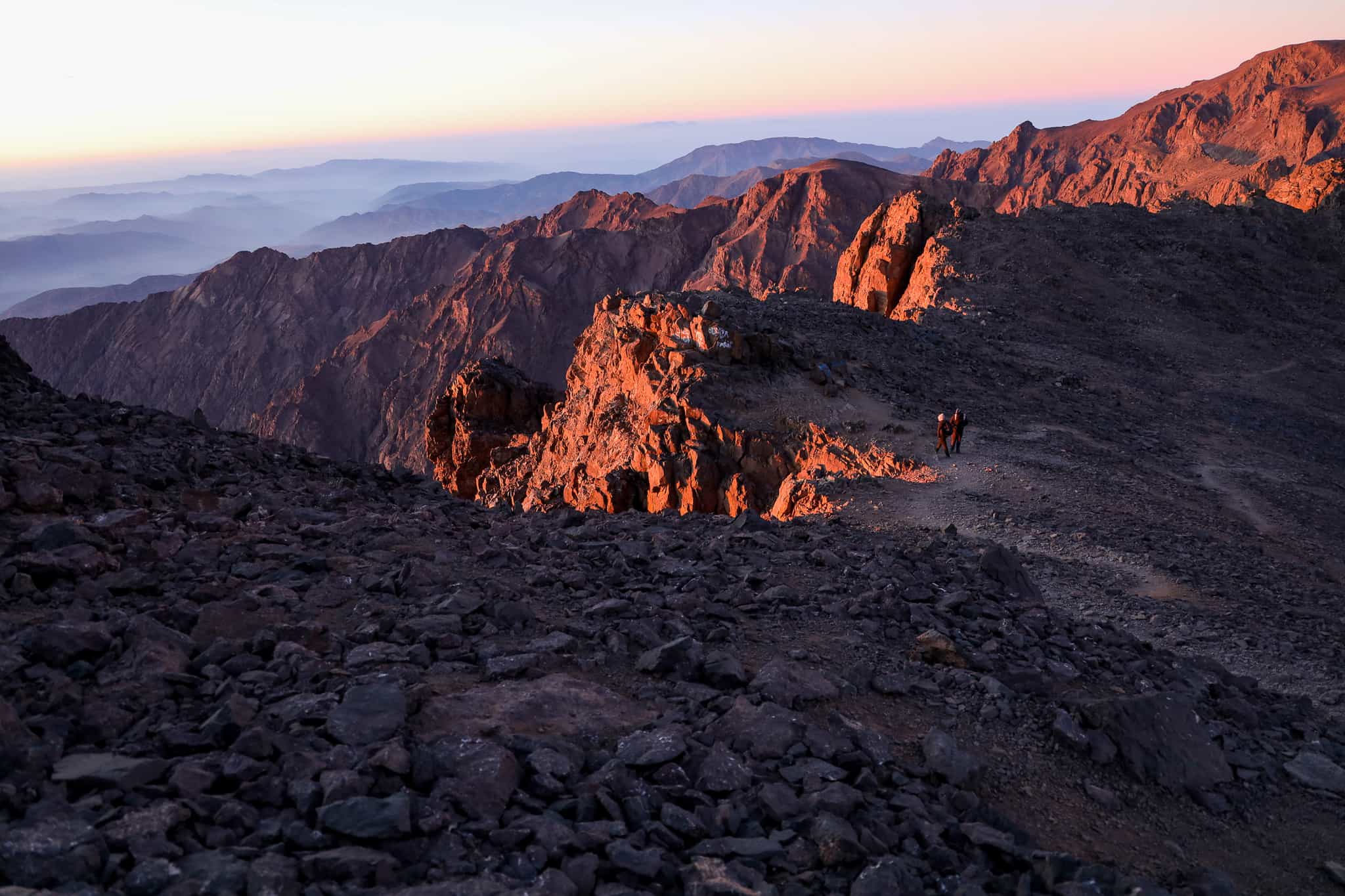
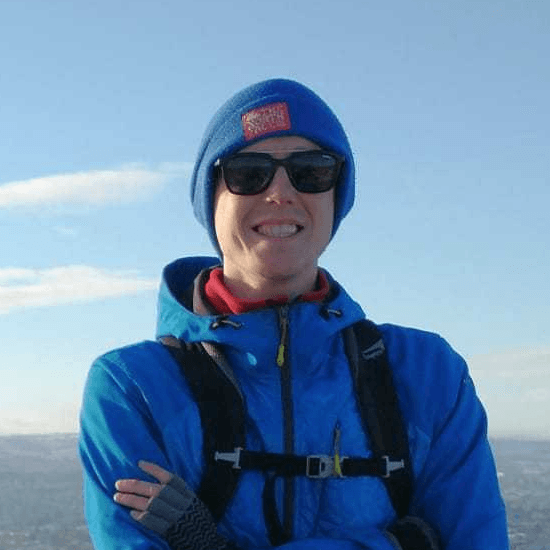
Need help finding flights?
From logistics and how to get there, to fitness, group dynamic and trip difficulty, Rory and his team of friendly experts are on hand to help.
We've got your back
Guaranteed to run
All Much Better Adventures trips are now guaranteed to run. Once you’ve booked your spot you can immediately make your travel arrangements, no uncertainty, no hanging about (excludes 'request to book' departures). Full details
Flexible payments
Secure your spot with the minimum deposit and pay off the remaining balance in as many instalments as you like, with no interest or fees. Full details
Happiness Guarantee
We’re so confident you’ll have an amazing time we’ll put our money on it. Full details
Full financial protection
To give you complete peace of mind Much Better Adventures is backed by ABTOT, ABTA and ATOL memberships. Full details
Tried & Trusted
Much Better Adventures is rated ‘Excellent’ on Trustpilot with over 1000 verified trip reviews averaging 4.8/5.
Connect before you go
You'll be invited to join a WhatsApp group to get to know each other before your big adventure together. Full details
DEPARTURE DATES
Saturday 13th September 2025
to Sunday 21st September 2025
Last Minute - Next 1 spot available at 10% off
